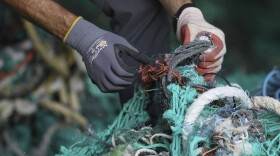The Hawaii Department of Heath’s troubled contact tracing program is reporting new issues, even after an influx of new staff.
As HPR and other media reported this summer, the Department previously had insufficient tracers to adequately identify and track down people potentially exposed to COVID-19. Those revelations led to the head of the program, epidemiologist Sarah Park, being placed on leave and the retirement of then-Health Director Bruce Anderson.
The Department has since increased the number of tracers on staff to 293, up from fewer than 10 earlier in recent months. But while more personnel have been hired, they are apparently struggling to successfully reach potentially infected contacts.
During a regular meeting of the State House of Representatives’ Select Committee on COVID-19, it was revealed that Department Health contact tracers are currently able to engage with fewer than half of suspected contacts.
Mark Mugiishi, a medical doctor and president of health insurer HMSA, revealed the problem during a discussion of the planned relaxing of the state’s mandatory two week quarantine for all inbound travelers.
“If we’re going to control this virus, we’re going to have to cooperate with contact tracers, urged Mugiishi, who has been central in the local effort to develop safe reopening protocols. “We can have them all, but they have to successfully do their job to keep the virus under control,” he added.
The lack of cooperation means that more than 50% of potentially infected people are slipping through the cracks of the tracing effort.
When an individual tests positive for COVID-19, tracers ideally reach out to that person’s close contacts, typically with a phone call or voicemail. This could be family or co-workers, but also strangers that may have been exposed in a public setting.
There are many of potential road blocks to that effort, even after contacts have been identified and located. The contact may speak another language. The call from the Health Department could be misidentified as a scam.
It’s also likely that many contacts may ignore the request out of embarrassment or fear of legal consequences. Mugiishi noted that ultimately does even more harm, and the community would be better off if everyone were honest and transparent with tracers.
Coming off a month of record-setting police activity designed to stop people from engaging in restricted activities, concern about legal consequences might seem rational to violators. 44,000 citations were issued in August for violations of Mayor Kirk Caldwell’s stay at home order. Those citations come with a court date and potential misdemeanor.
The new head of Hawaii’s contact tracing program, Disease Investigation Branch Chief Emily Roberson, says tracers are focused on public health, not punitive enforcement.
“We are in general not concerned with enforcement,” she told HPR in an interview earlier this month.
Roberson explained that the only time the Health Department would resort to legal action is if an individual was directed to isolate, but then willfully ignored that order.
The current contact tracing problem is not unique to Hawaii. Cities and states around the country have experienced similar issues getting people to volunteer personal information as part of the effort to reduce the spread of COVID.
However, there is reason to be hopeful. The City of San Francisco reports that on average, it has been able to interview 80 percent of identified contacts in recent weeks.
Public health leaders on the House COVID-19 Committee urged the public not to consider contact tracing a failed program, but to view this as the next stage of development in addressing previous failings.
Whether the current challenges can ultimately be addressed, particularly in time for the planned resumption of tourism, remains an open question. The state has struggled to communicate effectively during the initial six months of the pandemic, leading to a deficit of trust from the public.
Whether or not officials can regain that trust, and convince the public to comply invasive restrictions, will be likely determine whether contact tracing and other mitigation measures can go on to be successful.
HMSA head Mugiishi outlined a four-step process of that every individual must go through for the measures to be successful: know, understand, care, comply. He noted that all over the country, educated people have been seen ignoring restrictions because they either did not understand the reasoning or chose not to care.
“All we can do is attack it one persuasion at a time,” he explained.



